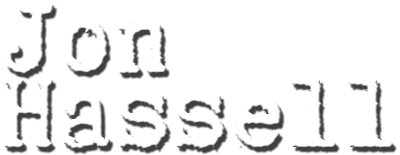Cover NOT yet available in
Join Patreon for 4K upload/download access
Your Rating (Click a star below)
![]()
![]()
![]()
![]()
![]()
![]()
![]()
![]()
![]()
![]()
Track List
01) Aurora
02) Time and Place
03) Abu Gil
04) Last Night the Moon Came
05) Clairvoyance
06) Courtrais
07) Scintilla
08) Northline
09) Blue Period
10) Light on Water
01) Aurora
02) Time and Place
03) Abu Gil
04) Last Night the Moon Came
05) Clairvoyance
06) Courtrais
07) Scintilla
08) Northline
09) Blue Period
10) Light on Water
5:22
3:48
13:04
11:15
1:05
5:44
0:50
6:43
7:58
7:59
Data Complete
 60%
60%
Total Rating
 60%
60%Total Rating
![]() (1 users)
(1 users)
Back Cover![]()
CD Art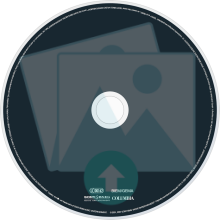
3D Case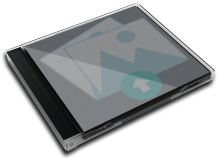
3D Thumb
3D Flat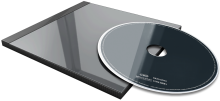
3D Face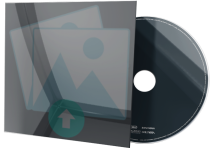
3D Spine
First Released
![]() 2009
2009
![]() Jazz
Jazz
![]() Enlightened
Enlightened
![]() International
International
![]() ---
---
![]() Medium
Medium
![]() Album
Album
![]() 0 copies
0 copies
Album Description 
Click yellow EDIT Button add one in English or another language

User Album Review
The strangely beautiful title of Jon Hassell's Last Night the Moon Came Dropping Its Clothes in the Street on ECM is taken from a poem by the great 13th century Sufi mystic Jalaluddin Rumi. The rest of it, in the context of the sound here, is also instructional: "Last night the moon came dropping its clothes in the street / I took it as a sign to start singing / Falling up into the bowl of sky."
Hassell's electronically enhanced trumpet playing follows directly in a line from Miles Davis' experiments of the 1970s. It comes off more as "singing" than anything else. He sounds like no one else, but many trumpet players and sound collagists have been deeply influenced by his work.
The "bowl of sky" in the poem is referent, too: it reflects the quality of Hassell's musical montages and sonic investigations. This has been true since the very beginning in the 1970s, but became his trademark "sound" while working with Brian Eno as he developed his "Fourth World" music -- showcased on his EG albums from the early '80s (Fourth World, Vol. 1: Possible Musics, Fourth World, Vol. 2: Dream Theory in Malaya, Aka/Darbari/Java ) -- and was acutely articulated on his last ECM release, 1985's brilliant Power Spot.
Last Night the Moon Came Dropping Its Clothes in the Street is Hassell's first recording since 2005's Maarifa Street: Magic Realism, Vol. 2; it's an assembled montage of sessions recorded in France and Los Angeles, and concerts are also woven into the rich fabric here.
Hassell's music, even now, sounds alien, beguiling, mercurial, seemingly formless and airy but full of subtle washes, shifts of tone, and polyrhythmic strategies.
The ten cuts here are mostly middle-length pieces that range between five and eight minutes, but three -- "Time and Place," "Clairvoyance," and "Scintilla" -- act as transitions segmenting, however seamlessly, the album into roughly thirds.
The band contains a pair of holdovers from his last outing in bassist Peter Freeman -- who doubles on laptop -- and guitarist Rick Cox, who has been augmented by no less than Eivind Aarset on the instrument. The other new players include Jamie Muhoberacon keyboard and laptop, drummers Helge Norbakken and Pete Lockett, Kheir Eddine M'Kachiche on violin, and Jan Bang on live sampling.
Together they root and extend the aerial sound of Hassell's trumpet that flows everywhere and anywhere. Check the simple bass and guitar rhythmic attack on "Abu Gil," the album's longest track, where In a Silent Way's "It's About That Time" meets the desert blues feels of "Anouar Brahem" and the Master Musicians of Jajouka meet the noir-ish ambient funk of early Shriekback. The title track, by contrast, is a long, loping, beautiful number where moods of morning, marketplaces, and nocturnal sunsets all loosely entwine around the listener.
The obvious postmodern jazz soloist's approach hovers all around the shapes and colours evoked by keyboards and trumpet in "Courtrais," as soundscape, loops, and ambiences all deepen and widen before being grounded by a subtle but unflinching backbone-slipping bassline by Freeman.
Hassell moves toward everything -- samples, drifting sonics, hints of melody, and, for such quiet and subtle music, an impressive harmonic palette -- to create a montage that evokes the timelessness of the past with a firm grasp on the unknowable, perhaps even unspeakable, future. His jazzman's sense of time and phrasing is enhanced by his painterly sense of space and shade. This album is further proof that Jon Hassell inhabits a terrain of his own, and reflects the true vibration of poetry as it meets the human ear as something akin to pure sound.
Core material is drawn from a session at Studios La Buisonne near Avignon in April 2008, with detail added in Los Angeles in November and December.
Live recordings from Courtrais, Belgium and London, as well as a remix of a piece originally created for a Wim Wenders movie, are also integrated into the atmospheric, filmic flow, along with short samples snared throughout 2008.
External Album Reviews
None...
User Comments


Click yellow EDIT Button add one in English or another language
User Album Review
The strangely beautiful title of Jon Hassell's Last Night the Moon Came Dropping Its Clothes in the Street on ECM is taken from a poem by the great 13th century Sufi mystic Jalaluddin Rumi. The rest of it, in the context of the sound here, is also instructional: "Last night the moon came dropping its clothes in the street / I took it as a sign to start singing / Falling up into the bowl of sky."
Hassell's electronically enhanced trumpet playing follows directly in a line from Miles Davis' experiments of the 1970s. It comes off more as "singing" than anything else. He sounds like no one else, but many trumpet players and sound collagists have been deeply influenced by his work.
The "bowl of sky" in the poem is referent, too: it reflects the quality of Hassell's musical montages and sonic investigations. This has been true since the very beginning in the 1970s, but became his trademark "sound" while working with Brian Eno as he developed his "Fourth World" music -- showcased on his EG albums from the early '80s (Fourth World, Vol. 1: Possible Musics, Fourth World, Vol. 2: Dream Theory in Malaya, Aka/Darbari/Java ) -- and was acutely articulated on his last ECM release, 1985's brilliant Power Spot.
Last Night the Moon Came Dropping Its Clothes in the Street is Hassell's first recording since 2005's Maarifa Street: Magic Realism, Vol. 2; it's an assembled montage of sessions recorded in France and Los Angeles, and concerts are also woven into the rich fabric here.
Hassell's music, even now, sounds alien, beguiling, mercurial, seemingly formless and airy but full of subtle washes, shifts of tone, and polyrhythmic strategies.
The ten cuts here are mostly middle-length pieces that range between five and eight minutes, but three -- "Time and Place," "Clairvoyance," and "Scintilla" -- act as transitions segmenting, however seamlessly, the album into roughly thirds.
The band contains a pair of holdovers from his last outing in bassist Peter Freeman -- who doubles on laptop -- and guitarist Rick Cox, who has been augmented by no less than Eivind Aarset on the instrument. The other new players include Jamie Muhoberacon keyboard and laptop, drummers Helge Norbakken and Pete Lockett, Kheir Eddine M'Kachiche on violin, and Jan Bang on live sampling.
Together they root and extend the aerial sound of Hassell's trumpet that flows everywhere and anywhere. Check the simple bass and guitar rhythmic attack on "Abu Gil," the album's longest track, where In a Silent Way's "It's About That Time" meets the desert blues feels of "Anouar Brahem" and the Master Musicians of Jajouka meet the noir-ish ambient funk of early Shriekback. The title track, by contrast, is a long, loping, beautiful number where moods of morning, marketplaces, and nocturnal sunsets all loosely entwine around the listener.
The obvious postmodern jazz soloist's approach hovers all around the shapes and colours evoked by keyboards and trumpet in "Courtrais," as soundscape, loops, and ambiences all deepen and widen before being grounded by a subtle but unflinching backbone-slipping bassline by Freeman.
Hassell moves toward everything -- samples, drifting sonics, hints of melody, and, for such quiet and subtle music, an impressive harmonic palette -- to create a montage that evokes the timelessness of the past with a firm grasp on the unknowable, perhaps even unspeakable, future. His jazzman's sense of time and phrasing is enhanced by his painterly sense of space and shade. This album is further proof that Jon Hassell inhabits a terrain of his own, and reflects the true vibration of poetry as it meets the human ear as something akin to pure sound.
Core material is drawn from a session at Studios La Buisonne near Avignon in April 2008, with detail added in Los Angeles in November and December.
Live recordings from Courtrais, Belgium and London, as well as a remix of a piece originally created for a Wim Wenders movie, are also integrated into the atmospheric, filmic flow, along with short samples snared throughout 2008.
External Album Reviews
None...
User Comments

No comments yet...

